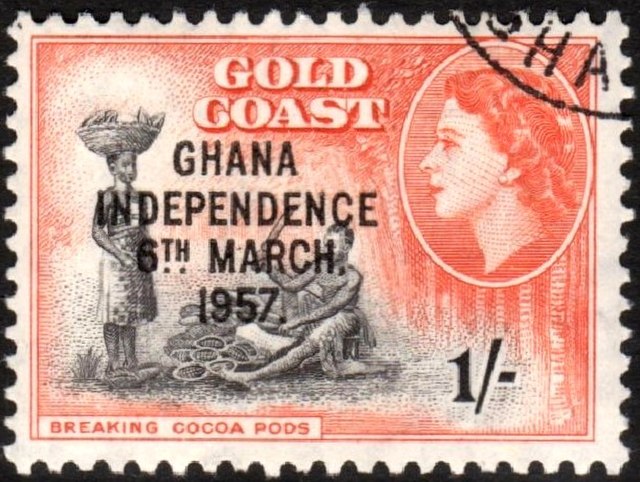The Kingdom of Dagbon (Dagbaŋ) is the oldest and one of the most organised traditional kingdoms in Ghana founded by the Dagomba people (Dagbamba) in the 15th century. During its rise, it comprised, at various points, the Northern, Upper West, Upper East, Savannah Region and North East regions of present-day Ghana. It also covered portions of Burkina Faso, North East Ivory Coast and North West Togo. Since Ghana's independence in 1957, the Kingdom just like all of Ghana's kingdoms and ethnic states has assumed a traditional, customary role.
Statue of Yennega
Lunsi of Dagbon
Graveyard of German invaders at Adibo, near Yendi. Dagbon ultimately won the long war for its right to freely exist.
Simpa dance drummers
Ghana, officially the Republic of Ghana, is a country in West Africa. It abuts the Gulf of Guinea and the Atlantic Ocean to the south, sharing a border with Ivory Coast in the west, Burkina Faso in the north, and Togo in the east. Ghana covers an area of 239,567 km2 (92,497 sq mi), spanning diverse biomes that range from coastal savannas to tropical rainforests. With over 32 million inhabitants, Ghana is the second-most populous country in West Africa. The capital and largest city is Accra; other significant cities include Kumasi, Tamale, and Sekondi-Takoradi.
18th-century Ashanti brass kuduo. Gold dust and nuggets were kept in kuduo, as were other items of personal value and significance. As receptacles for their owners' kra, or life force, kuduo were prominent features of ceremonies designed to honour and protect that individual.
The Portuguese established the Portuguese Gold Coast with the construction of Elmina Castle (Castelo da Mina) by Diogo de Azambuja in 1482, making it the oldest European building in sub-Saharan Africa.
A Gold Coast postage stamp overprinted for Ghanaian independence in 1957
Traditional chiefs in 2015








